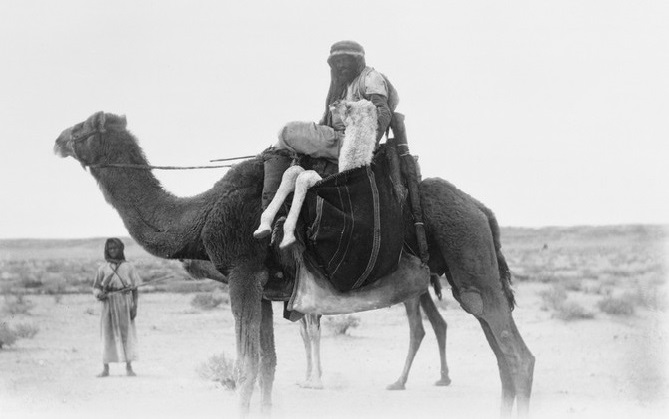During the period of his stay in Mecca and Medina, Shaykh Muhammad came across books that had a role in the formation of his thought. Among them are the books of Ahmad ibn Hanbal, his Musnad in particular; the books of Ibn Qayyim al-Jawziyyah; and the writings of Ibn Taymiyyah.
Contrary to other ‘ulama’ of the Ahl as-Sunnah, they expressed new beliefs and opinions which can be extracted from their books on jurisprudence and history. Of course, the Shaykh was largely influenced by the views of Ibn Taymiyyah.
Ibn Taymiyyah lived during the 8th century AH. In terms of belief, he was follower of Ahmad ibn Hanbal who lived in the 3rd century AH. Ibn Taymiyyah believed in a sort of anthropomorphism concerning God maintaining that God has a hand, foot, eye, tongue and mouth, and occupies a space! In order to prove his case, he resorted to the literal text of Qur’anic verses, maintaining that God is sitting on a throne in heaven.
Ibn Taymiyyah is the epithet and title of Abu’l-’Abbas Taqi ad-Din Ahmad ibn ’Abd al Halim. He was born in the territory of Harran in present-day Turkey. He then migrated with his father to Damascus, Syria, and there he acquired learning in religion and jurisprudence. In many ideological and intellectual issues, he held extreme and radical views.
In addition to his anthropomorphic beliefs concerning God, he prohibited visitation of the graves and seeking the intermediation {tawassul} of the Prophet (s) while deeming it permissible to abuse Imam ’Ali ibn Abi Talib (’a). On issues in jurisprudence, he opposed the predecessors of the four Sunni schools. From the above points, it can be understood that the Shaykh was not the first person to have expressed such beliefs, for individuals such as Ibn Taymiyyah had advanced similar ideas prior to him.
Like Shaykh Muhammad, Ibn Taymiyyah earned the wrath and stern criticism of the ‘ulama’ of his time and for a time he was exiled to Egypt. But through the help of the government of the time, he returned to Damascus. During the last period of his life, he was imprisoned for his opposition to the ’ulama’ of Damascus and finally expired in the castle of Damascus and was buried there.
Source:
A New Analysis of Wahhabi Doctrines
By: Muhammad Husayn Ibrahimi
ABWA Publishing and Printing Center
[Pg. 15-16].

